
PBL Lesson Idea: Third Graders seeking to Enrich Senior Living
Significant Content – Third Graders in an ELA class will hear from local senior living communities of current needs to engage elderly in meaningful activities. They will explore the resources currently available in the these communities and brainstorm additional ideas to add to the community. They will create a project to showcase their new ideas for the community and various clients that may choose to live here.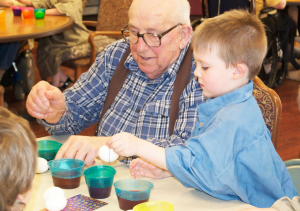
21st Century Competencies
CCR Reading Standards
- Determine central ideas or themes of a text and analyze their development; provide a summary or thorough analysis of the text, including the appropriate components.
- Analyze how and why individuals, events, and ideas develop and interact over the course of a text.
- Analyze the structure of texts, including how specific sentences, paragraphs, and larger portions of the text (e.g., a section, chapter, scene, or stanza) relate to each other and the whole.
- Assess how point of view, perspective, or purpose shapes the content and style of a text.
- Integrate and evaluate content presented in diverse media and formats, including visually and quantitatively, as well as in words.*

CCR Writing Standards
- Write arguments to support claims in an analysis of substantive topics or texts, using valid reasoning and relevant and sufficient evidence.
- Produce clear and coherent writing in which the development, organization, and style are appropriate to task, purpose, and audience.
- Develop and strengthen writing as needed by planning, revising, editing, rewriting, or trying a new approach.
- Use technology, including the Internet, to produce and publish writing and to interact and collaborate with others.
- Conduct short as well as more sustained research projects based on focused questions, demonstrating understanding of the subject under investigation.
CCR Speaking and Listening Standards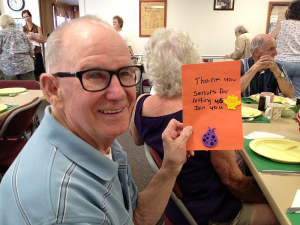
- Prepare for and participate effectively in a range of conversations and collaborations with diverse partners, building on others’ ideas and expressing their own clearly and persuasively.
- Integrate and evaluate information presented in diverse media and formats, including visually, quantitatively, and orally.
- Evaluate a speaker’s perspective, reasoning, and use of evidence and rhetoric.
- Present information, findings, and supporting evidence such that listeners can follow the line of reasoning and the organization, development, and style are appropriate to task, purpose, and audience.
- Make strategic use of digital media and visual displays of data to express information and enhance understanding of presentations.
CCR Language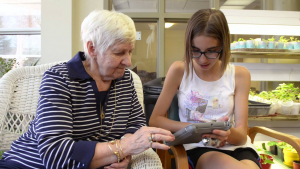
- Demonstrate command of the conventions of standard English grammar and usage when writing or speaking.
- Demonstrate command of the conventions of standard English capitalization, punctuation, and spelling when writing.
In-Depth Inquiry – “Many elderly live on fixed incomes, do not have someone to look out for them, and may be living in a nursing home or an assisted living facility. The number of people reaching the status of elderly is increasing. Although countries differ as to what percentage of their population is elderly right now, the US’s elderly population will double in 25 years. According to an article in the New York Times, the number of children under 15 will be outnumbered by the elderly by 2050, across the world.” – from penniesof time.com
Why on Earth do I bring this up? We need to be more active in caring for our elderly, and we need to teach our children to do the same. I have lived in several communities where I went weeks and did not see a single elderly person. As I am being more deliberate with my boys on reaching out to others, I realize that this is a shame. My boys need to feel comfortable around the elderly. Not only that, they need to learn the value that the elderly bring to society and our communities.
Students will discuss the following questions from doinggoodtogether.org
Talk about the issue.
- Does it seem important to visit older people? Why?
- What do you think you can learn from having friends of many different ages?
- How would you feel if you couldn’t walk fast or couldn’t get around to visit your friends?
- Sometimes seniors, whether they are living in institutions or independently, get lonely. Have you ever felt lonely? What helped you feel better?
- Do you have any older friends or family members you’d like to share kindness with? Consider making a card or baking a treat to share and going for a visit.
Driving Question- How can I as a student, help enrich the lives of elders living around me?
Need to Know –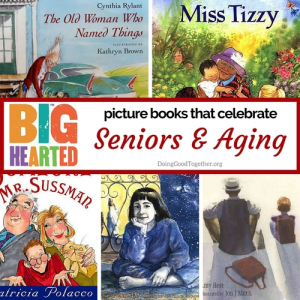
Students will read 2-3 picture books and analyze relationships between the children and the elderly characters of the books. This site offers a list of 13 picture books to choose from and rational for involving kids with elders. https://www.doinggoodtogether.org/bhf-book-lists/picture-books-about-aging
Students will fill out a Book Report organizer about each book.
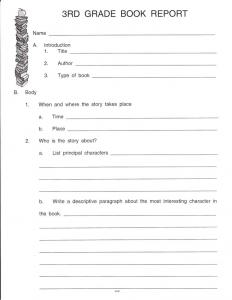
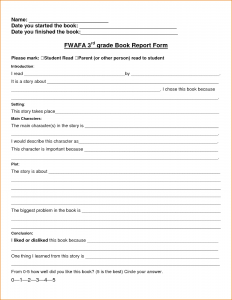
Printable 3rd grade book report organizers: http://www.canbum.net/cdn/14/1990/843/3rd-grade-book-report-template_253565.png
http://www.canbum.net/cdn/14/1990/843/3rd-grade-book-report_253560.jpg
![]()

Students will explore the differences in senior living including retirement homes, assisted living and nursing homes. They will fill out a graphic organizer to list the characteristics of each community.
Retirement Home: http://www.mapleknoll.org/retirementliving.php
Assisted Living: http://www.mapleknoll.org/assistedliving.php
Nursing Home: http://www.mapleknoll.org/skillednursing.php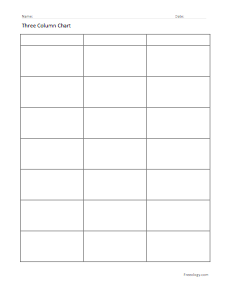
Voice and Choice –
Students will identify needs of the elderly and brainstorm new ideas they can participate in by exploring elements of this site: http://penniesoftime.com/service-projects-to-help-the-elderly. They will write their ideas on a separate graphic organizer as seen here.
Students will work in partners to create a brochure, poster, or storybook to showcase their ideas of enriching senior lives in either a retirement community, assisted living facility, or nursing home. They can research and plan their project in partners, but each student must be responsible for 3 ideas written in paragraph form. Example: Gardening, Writing Thank You Cards, or Pet Visits.
Students will create a persuasive essay answering the following question: Is it important to pay attention to elderly people and help them enjoy life?
Critique and Revision – Students will peer edit the paragraphs for their brochure/poster/or storybook before transferring them to their final their projects. Peer editing will identify grammar and spelling mistakes. They will conference with the teacher 2 times before the project is complete. One of these sessions will be early to approve the plan students have come up with. The second session will be to double check after they’ve peer edited.
Public Audience – Students will present their brochure/poster/storybook to visitors from the three senior living centers we will study. These may be employees of the centers and/or residents. Persuasive essays will be on display in the hallways during the week the visitors will be coming.
Reflection: Students will be encouraged to choose one of the ideas from their project to do with seniors at Maple Knoll Village. The teacher can arrange a class field trip with pre-approved activities with residents, or the teacher can send parents contact information for Maple Knoll so students can go with their families. Teachers should put up a bulletin board of pictures taken during these visits and hang up student and resident reflection blurbs about the experience.
